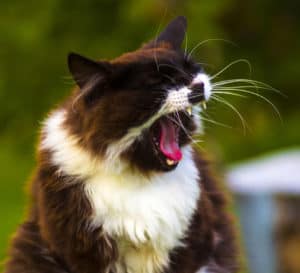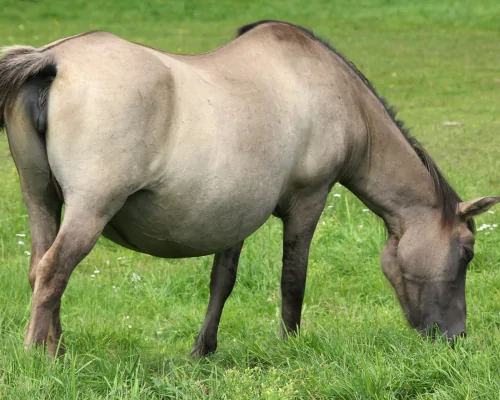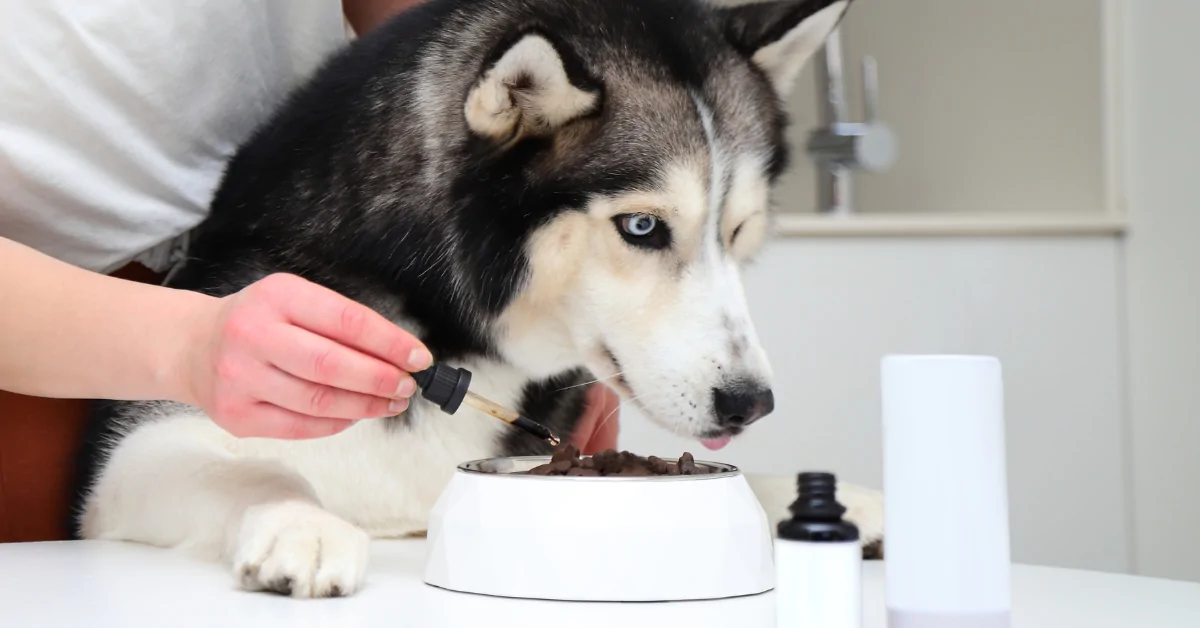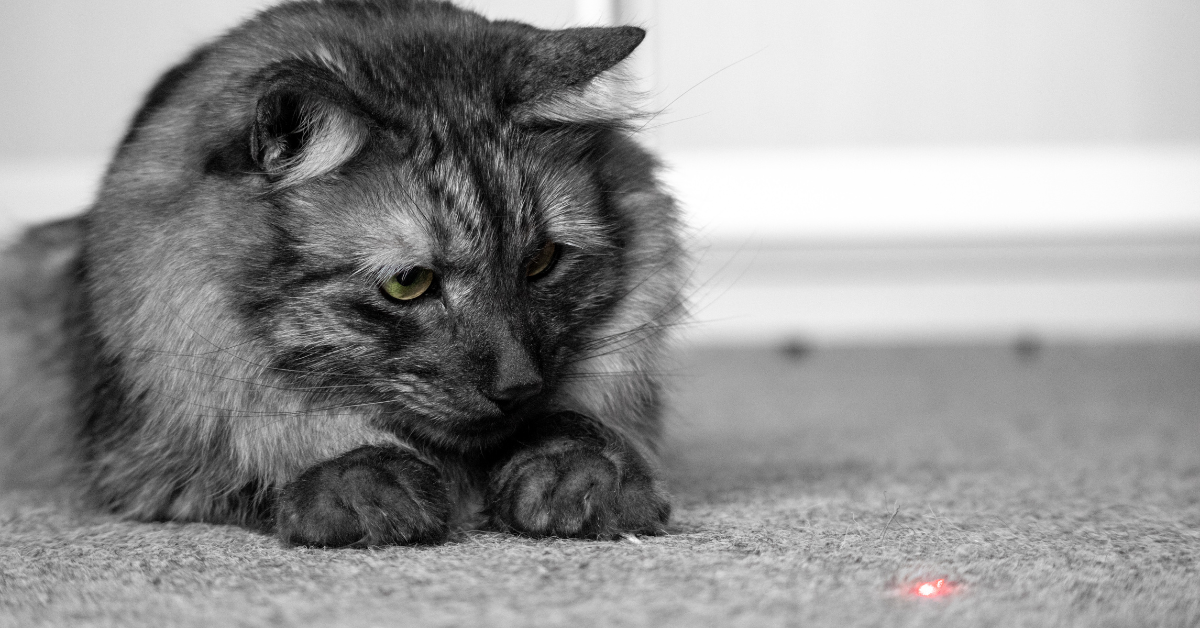Oh no. You hear it. The tell-tale signs of a hairball coming on. Your cat is hacking, gagging, and retching. Almost as quickly as it began, your cat goes back to their business, and a nice, shiny hairball awaits you. “Great…” you think to yourself.
As you go to scoop it up and put it in the trash, you may begin to wonder: “why does my cat get hairballs? What causes them? Is my furry pal okay? I know I wouldn’t be okay if I just hacked up what looks like a small animal…”
In this short article we’ll review what hairballs are, why cats get them, whether or not you should be concerned by them, and how to prevent them altogether!
What Are Hairballs?

Despite their name, hairballs are rarely round like little balls. Instead, they’re often slender and cylindrical, almost like a cigar or a sausage. They’re usually about an inch long and half an inch thick, though some can grow to be up to five inches in length! Talk about a hairy situation.
Why Does My Cat Get Hairballs?

According to Dr. Guglielmino, an associate veterinarian at The Cat Doctor feline health clinic in Seattle, kittens and young cats are less likely to develop hairballs than mature cats. This is because young cats and kittens are less experienced with grooming, whereas mature cats spend a good portion of their days licking their coats. Unfortunately, it follows then that cats with long hair – such as Persians and Maine Coons – are at a substantially higher risk for developing hairballs than short-haired breeds.
Are Hairballs a Health Concern to Your Cat?
Again, it’s important to remember that hairballs are common occurrences with cats. In fact, Dr. Richard Goldstein, DVM, an associate professor of small animal medicine at Cornell University’s College of Veterinary Medicine, claims that it’s common for cats to regurgitate hairballs once every week or so. However, regular hairballs or daily hairballs may be signs of an underlying problem.

Any number of health disorders may cause excessive hairball production. Conditions like inflammatory bowel disease or stomach / intestinal cancer can negatively affect the movement of things through the digestive tract, which may result in excessive hairball production. Additionally, conditions that affect the fur or skin can cause your cat to feel itchy and thus groom more often which can produce more hairballs than normal.
When you’re at the vet, they may also want to conduct imaging tests like x-rays or ultrasounds to ensure there’s no blockages. This last point is especially important, as hairball blockages in the intestine or esophagus can quickly become life-threatening to your cat. The treatment plan your vet recommends will be based on the cause of your cat’s hairballs.
Hairball Treatment Options
If there is no clear underlying condition that is causing your cat to produce excessive hairballs, your veterinarian may recommend that your cat start taking a hairball treatment gel known as laxatone. These gels serve as a lubricant that can help move things along in your cat’s digestive tract.
Additionally, your veterinarian may suggest your cat begin on an over-the-counter diet formulated to prevent hairballs. A diet focused on controlling hairball production will be rich in fiber that helps hair move through your cat’s digestive system while also nourishing your cat’s luscious coat. However, if the problem persists, your vet may also propose that your cat begin a specialized, prescription diet that will more aggressively treat the problem.
If a minor intestinal blockage is present, your vet may recommend that your cat take a veterinary-grade laxative. However, you should never give your cat a laxative without first being recommended to by a veterinarian. Your vet may also recommend surgery if they believe no other methods will be sufficient in removing the blockage.
Can You Prevent Hairballs?

Finally, if you notice that your cat is beginning to show signs of irritating skin infections that may cause them to excessively groom themselves, consider reaching for Banixx! This clinically-proven solution provides fast-acting, sting-free, odorless relief for a variety of unpleasant maladies without relying on pesky steroids or antibiotics. Simply identify the affected area, apply Banixx once or twice daily, and in no time your cat will start feeling better. With Banixx, relief really can be that simple.
Of course, you already know to be cautious when it comes to your pet’s health – otherwise you wouldn’t be reading this blog! That’s why we hope you’ll come back to our blog to learn more about how to keep your four-legged friend happy and healthy. If on the other hand, you are
interested in how to maintain your cats teeth, we cover that too. Interested in more quirky items such as why cats know things over, yep, we’ve got that covered.
Sources
- https://pets.webmd.com/cats/guide/what-to-do-about-hairballs-in-cats
- https://www.hillspet.com/cat-care/healthcare/why-hairballs-in-cats
- https://www.vet.cornell.edu/departments-centers-and-institutes/cornell-feline-health-center/health-information/feline-health-topics/hairy-dilemma
- https://www.vet.cornell.edu/departments-centers-and-institutes/cornell-feline-health-center/health-information/feline-health-topics/danger-hairballs
- https://www.preventivevet.com/cats/are-hairballs-normal-for-cats
- https://www.chewy.com/vetoquinol-laxatone-lubricant/dp/109717
- https://www.hillspet.com/cat-care/healthcare/why-hairballs-in-cats
- https://banixx.com/for-cats/
Share this Post
Featured Post
Recent Posts
Lipomas….mysterious Lumps & Bumps on your pup…When should I worry? What should I do about them?

Managing the Mamas –Part 2 –The development process

Managing the Mamas: Part 1 – Preparing to Breed Your Mare

HOW MANY TOES?? Caring for the Polydactyl Cat

Do Dog Joint Supplements Actually Work?


